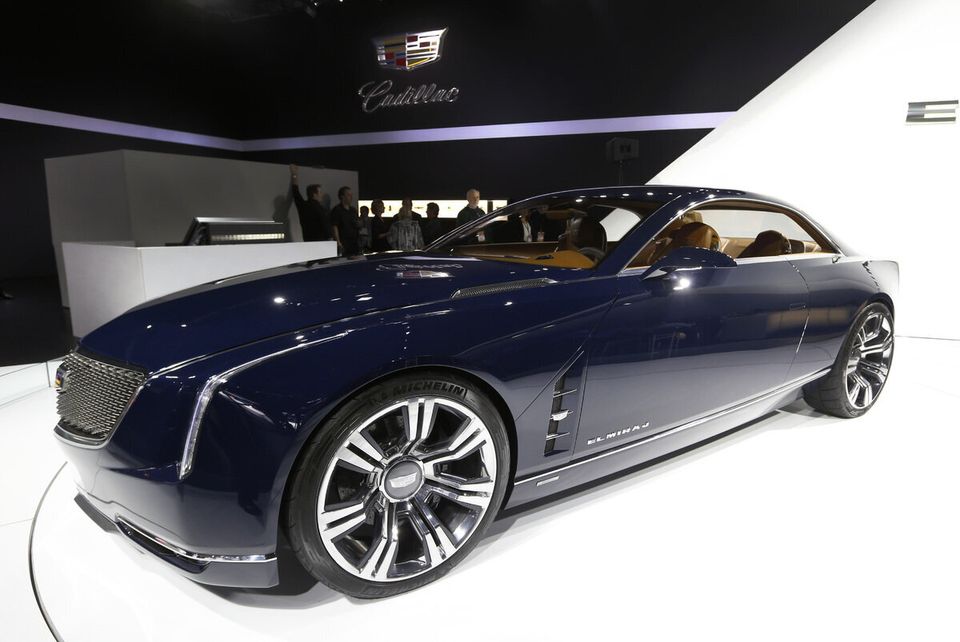Back in late 2011 after the Occupy Wall Street protests, Fiat-Chrysler CEO Sergio Marchionne gave a speech in Toronto to decry what he called "the most inane displays of greed." The reference was to behaviour he had observed while serving on various company boards over the years.
Just two years before that speech, Chrysler sought (and received) $2.9-billion from Canada's taxpayers and $12.4-billion from the U.S. government, amid a doomsday scenario for the automotive sector. It was rather cheeky of Mr. Marchionne, then, to try and take the side of the "99 per cent." Chrysler has always been a poster boy for the sort of avarice that some companies inflict on 100 per cent of taxpayers: the ever-constant demand that governments ante up money or a company will shift production to another jurisdiction.
Chrysler's strategy to separate Canadian taxpayers from their dollars is on display once again. In January, Marchionne informed the federal and Ontario governments that his company might take its investment intentions elsewhere. However, the company has hinted such a fate can be avoided if the two governments serve up substantial tax dollars for retooling a minivan plant in Windsor. Chrysler wants $700-million to "preserve" 4,600 jobs. Do the math and that's over $152,000 per Chrysler job.
The latest request is nothing new for Chrysler or others in the automotive sector. Since 2003, including the 2009 bailout cash, and to 2013, the federal and Ontario governments have offered up $17.2-billion to various automotive companies courtesy of taxpayers. And in its latest budget, the federal government just deposited another $500-million into the Automotive Innovation Fund, a sort of slush-fund for the automotive sector.
Pre-2009 subsidies from both governments include: $175-million in 2003 for General Motors; $200-million in 2004 for Ford; $435-million in 2005 for GM; $125-million in 2005 for Toyota; $123-million in 2005 for Daimler-Chrysler; $15-million in 2006 for Honda; and $80-million in 2008 for Ford. After the 2009 bailout, further announcements from Ottawa and Queen's Park included $142-million for Toyota in 2011 and $143-million in 2013 for Ford.
Contrary to the claims of rent-seeking executives, only some of the disbursed money ever finds its way back to taxpayers. For example, out of the $2.9-billion Chrysler received in the 2009 bailout, my calculations (based on numbers provided by the federal department of Finance) show that after all the repayments, stock sales and interest repayments are included, taxpayers are still out $810-million.
Taxpayer subsidies to businesses have many troubling aspects. For one thing, no company can guarantee employment no matter how much money politicians throw at a company. That lesson is something Canadians just learned again with Bombardier Inc., which recently announced it would lay off 1,700 people, this despite having received more than $1.1-billion over the decades from Industry Canada.
And many of the claims that provide the political "cover" for corporate welfare--extra economic growth, an increase in employment, more tax dollars to some local government--are often a mirage.
As one expert on such subsidies, Heinz University Professor Terry Buss, has noted, government and industry studies that argue for the supposed beneficial effects of corporate welfare often fail to account for the substitution effect. That is where "gains" to one region are necessarily offset by losses elsewhere; e.g., layoffs at a competitor's plant or reduced tax revenues to a government somewhere else when a facility is shuttered due to increased competition from a taxpayer-financed competitor.
There is this other odd aspect to the business subsidy game: It props up the biggest corporations. Since 1961, of the more than $22-billion disbursed to business by just one federal department, Industry Canada, half, or $11-billion, was provided to just 25 corporations--most of which were automotive and aerospace companies with significant market capitalizations. Corporate welfare is failed industrial policy for many reasons, but the evidence shows the cash overwhelmingly ends up with existing industry players who can afford to lobby for subsidies.
Corporate welfare is the ultimate evasion of responsibility. It helps companies avoid the consequences that consumers would otherwise assign to a company, the evasion demonstrated rather clearly by Chrysler's two government bailouts in a generation. By asking for yet another almost $700-million from taxpayers, the Fiat-Chrysler CEO again displays some of the many problems with corporate welfare: It most often flows to the established players; it rewards companies that plenty of consumers have already rejected; and the initial taxpayer subsidies or bailouts create a Pavlovian-like expectation from such companies for repeated infusions of taxpayer cash in the future.
ALSO ON HUFFPOST:
